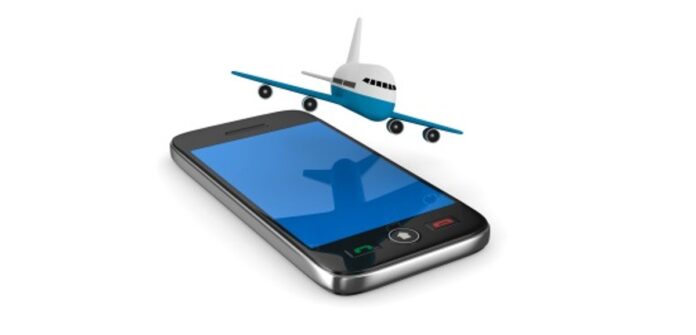NB: This is a viewpoint from Maxine Clark at HolidayExtras.
For years, air travellers were happy to turn off phones and other devices, tuck into their peanuts, flick through the inflight magazine and watch a film.
Today’s passenger is more likely to want to tweet a picture of their airline meal, listen to Spotify or browse the internet.
A survey we carried out of almost 5,000 air travellers during April 2013 revealed that a quarter of British holidaymakers believe free wifi is a human right.
IFE Services recently released figures highlighting the growing demand for inflight wifi and the potential for airlines to generate ancillary revenue from this service.
But according to our study, 84% of passengers are willing to go without inflight internet access rather than pay a premium. So what does this mean for airlines?
Safety first
Historically, everyone accepted that phones and computers interfered with plane systems so demand for an inflight internet connection was low.
Yet, by 2011 we found that 6.5 million British passengers had admitted to using a phone during a flight with no apparent ill effects; and the US Federal Aviation Administration had declared it safe to use newer models of mobiles in “airplane mode” and to access the web during a flight.
Connectivity – a way of life
Nowadays most travellers understand that airlines ask passengers to switch off during take-off and landing to hold their attention during safety announcements, and to avoid the minimal interference risk.
But for the rest of the flight, internet access is no longer the preserve of business travellers – social media, online services such as Spotify, smartphones and tablets have changed everything.
Being connected is a leisure activity in its own right today – with people of all ages and interests publishing their views, experiences, images, videos and more, 24-7.
As thousands of excitable holidaymakers board their planes, with a few hours to spare and itchy fingers desperate to share every stage of their journey, the social media value for airlines and tour operators during a flight could be huge.
The end of inflight entertainment?
Despite the development of some impressive, award-winning inflight entertainment systems from the likes of Emirates and Singapore Airlines, it seems that many air travellers prefer to entertain themselves these days.
Our study found inflight entertainment is not necessary on a short haul flight and 48% admit they can’t survive a plane journey without a Kindle, iPad, mp3 player, Nintendo DS, laptop or DVD player.
The latest on-board entertainment systems though are interactive, enabling users to integrate their own devices with the airline offering.
Top technology
Singapore Airline’s next-generation eX3 system (launching on various aircraft during 2013 and 2014), is designed to provide a broadband internet connection to passenger devices and seat-backs, mobile phone services and global live television.
Plus the latest video screen technology and touch-screen handsets across all travel classes. The airline is also investing $50 million in a separate project to equip its planes with wireless internet and mobile data services.
Innovative services like this are not common. The existing wifi provision from airlines flying out of the UK is patchy, with some passengers experiencing frustratingly slow, expensive wifi or none at all. Carriers generally do not provide power points in all classes.
Many budget airlines stick to the trusty inflight magazine while some smaller, newer airlines are able to provide more up-to-date entertainment.
Legacy airlines grapple with the need to provide the latest technology for discerning customers, versus the costs and limitations of upgrading a sizeable fleet of older and differing aircraft.
A big, expensive task.
The right price
In the next few years Inmarsat, a leading British satellite telecommunications company, is launching three new satellites as part of its Global Xpress project. They will provide global coverage to airline passengers, making inflight wifi fast, cheap and consistent, on short and long haul flights.
According to OnAir, a Global Xpress distribution partner, there are three “truths” about in-flight connectivity:
- Any airline wanting to attract and keep customers must provide connectivity
- Connectivity has to be consistent all over the world
- Passengers want to use their phones, tablets and laptops in the same way they do on the ground, so they must have access to both a mobile phone network and wifi
Nevertheless, it is notoriously difficult to find the in-flight wifi information on airline websites, although according to Business Traveller magazine there are only four airlines currently offering free wifi: Norwegian, SAS, Turkish Airlines and Qantas first class.
So with the issue still somewhat in a state of flux, which airlines will harness the very latest communications technology, and how much will they charge their passengers to use it?
And, most importantly, will passengers actually use it (especially when factoring in costs)?
NB: This is a viewpoint from Maxine Clark at HolidayExtras.
NB2:Aircraft mobile image via Shutterstock.



